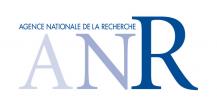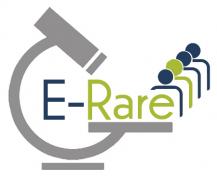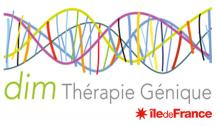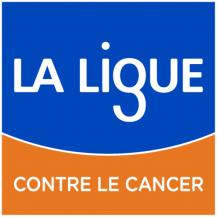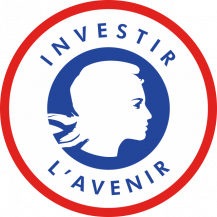Publié le 01.07.2025
Présentation
Le dénominateur commun de notre projet est le système lympho-hématopoïétique humain, caractérisé par des cellules ayant des capacités d'auto-renouvellement et de différenciation différentes en fonction de l'âge et de l'état clinique de l'individu (c'est-à-dire en bonne santé ou malade). Chez les mammifères adultes, l'hématopoïèse (c'est-à-dire l'expansion et la différenciation des cellules souches hématopoïétiques en cellules sanguines de la moelle osseuse) subit un renouvellement constant et étroitement régulé et subit de profonds changements au cours de la vie.
La compréhension de la hiérarchie de l'hématopoïèse humaine et des différentes étapes de la différenciation des cellules T et B dans le corps sain et dans des situations de maladie très particulières constitue la partie la plus fondamentale de notre projet de recherche. Pour répondre aux problématiques de recherche, le laboratoire de lymphohématopoïèse humaine a accès à une cohorte de patients inclus dans des essais clinique de phase I/II de thérapie génique ainsi qu’à une cohorte de patients atteints de déficits immunitaires héréditaires associés à des défauts B. Dans l'ensemble, les connaissances générées par ces études nous aideront à mettre en œuvre activement de nouveaux protocoles de traitement.
Les cellules souches et progénitrices hématopoïétiques (HSPC) récoltées sur un individu sain ou malade et les modifications génétiques ex vivo constituent des outils essentiels pour guérir les défauts héréditaires les plus graves, intrinsèques aux cellules, du système lympho-hématopoïétique. Néanmoins, plusieurs problèmes compromettaient encore le plein succès de ces types de thérapies.
Les améliorations de cette stratégie basée sur les HSPC sont le résultat des progrès et des découvertes apportées par la première partie de notre projet et par d'autres groupes de recherche. Les découvertes les plus récentes sur les caractéristiques des cellules T humaines (c'est-à-dire leur longue durée de vie, leur capacité d'auto-renouvellement, leur homéostasie et leurs fonctions) nous ont incités, ainsi que d'autres, à envisager leur utilisation in vivo après manipulation ex vivo - ouvrant la voie à des approches thérapeutiques moins toxiques.
Equipe
-

-
 MarinaCavazzanaProfesseur en Hématologie, Cheffe du service de Biothérapie, Coordinatrice du Centre d'Investigation Clinique pour les Thérapies Innovantes
MarinaCavazzanaProfesseur en Hématologie, Cheffe du service de Biothérapie, Coordinatrice du Centre d'Investigation Clinique pour les Thérapies Innovantes -

-
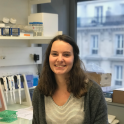
-
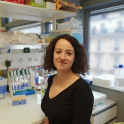
-

-

-
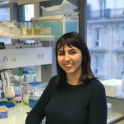
-

-

-

-
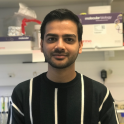
-

-

-
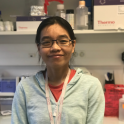
-
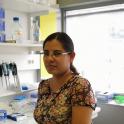
-

-

-

-

-
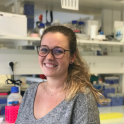
-
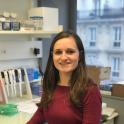
-

-
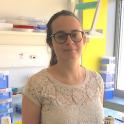
Ressources & publications
-
 2021Journal (source)Nat Commun
2021Journal (source)Nat CommunTransient mTOR inhibition rescues 4-1BB CAR-Tregs from tonic signal-induced d...
-
 2021Journal (source)Nat Immunol
2021Journal (source)Nat ImmunolSingle-cell analysis of FOXP3 deficiencies in humans and mice unmasks intrins...
-
 2021Journal (source)Blood
2021Journal (source)BloodA combination of cyclophosphamide and interleukin-2 allows CD4+ T cells conve...
-
 2021Journal (source)Blood Adv
2021Journal (source)Blood AdvAdenylate kinase 2 expression and addiction in T-ALL.
-
 2021Journal (source)J Allergy Clin Immunol
2021Journal (source)J Allergy Clin ImmunolImproving the diagnostic efficiency of primary immunodeficiencies with target...
-
 2020Journal (source)J Immunol
2020Journal (source)J ImmunolSeletalisib for Activated PI3Kδ Syndromes: Open-Label Phase 1b and Extension ...
-
 2020Journal (source)Am J Transplant
2020Journal (source)Am J TransplantDonor-targeted serotherapy as a rescue therapy for steroid-resistant acute GV...
-
 Journal (source)Mol Ther Methods Clin Dev
Journal (source)Mol Ther Methods Clin DevSuccessful Preclinical Development of Gene Therapy for Recombinase-Activating...
-
 2020Journal (source)Hum Mol Genet
2020Journal (source)Hum Mol GenetNHP2 deficiency impairs rRNA biogenesis and causes pulmonary fibrosis and Høy...
-
 2020Journal (source)Blood
2020Journal (source)BloodClonal tracking in gene therapy patients reveals a diversity of human hematop...
-
 2020Journal (source)Haematologica
2020Journal (source)HaematologicaA gain-of-function RAC2 mutation is associated with bone-marrow hypoplasia an...
-
 Journal (source)Mol Ther Methods Clin Dev
Journal (source)Mol Ther Methods Clin DevBiosafety Studies of a Clinically Applicable Lentiviral Vector for the Gene T...
-
 Journal (source)Mol Ther Methods Clin Dev
Journal (source)Mol Ther Methods Clin DevA Nontoxic Transduction Enhancer Enables Highly Efficient Lentiviral Transduc...
-
 2019Journal (source)Nat Rev Drug Discov
2019Journal (source)Nat Rev Drug DiscovGene therapy targeting haematopoietic stem cells for inherited diseases: prog...
-
 2019Journal (source)Bone Marrow Transplant
2019Journal (source)Bone Marrow TransplantEx vivo generated human T-lymphoid progenitors as a tool to accelerate immune...
-
 Journal (source)J. Allergy Clin. Immunol.
Journal (source)J. Allergy Clin. Immunol.Generation of adult human T-cell progenitors for immunotherapeutic applications.
-
 2019Journal (source)Haematologica
2019Journal (source)HaematologicaPlerixafor enables safe, rapid, efficient mobilization of hematopoietic stem ...
-
 2019Journal (source)Blood Adv
2019Journal (source)Blood AdvBaboon envelope LVs efficiently transduced human adult, fetal, and progenitor...
-
 2019Journal (source)Front Pediatr
2019Journal (source)Front PediatrHematopoietic Stem Cell Transplant for the Treatment of X-MAID.
-
 2018Journal (source)Haematologica
2018Journal (source)HaematologicaMutations in the adaptor-binding domain and associated linker region of p110δ...
-
 2018Journal (source)Blood
2018Journal (source)BloodGene-corrected human Munc13-4-deficient CD8+ T cells can efficiently restrict...
-
 2018Journal (source)Nat Immunol
2018Journal (source)Nat ImmunolSingle-cell analysis reveals the continuum of human lympho-myeloid progenitor...
-
 2017Journal (source)J Clin Immunol
2017Journal (source)J Clin ImmunolNeutropenia in Patients with Common Variable Immunodeficiency: a Rare Event A...
-
 2017Journal (source)Stem Cells Dev.
2017Journal (source)Stem Cells Dev.Gene Therapy with Hematopoietic Stem Cells: The Diseased Bone Marrow's Point ...
-
 Journal (source)J. Allergy Clin. Immunol.
Journal (source)J. Allergy Clin. Immunol.X-linked primary immunodeficiency associated with hemizygous mutations in the...
-
 Journal (source)J. Allergy Clin. Immunol. 2017
Journal (source)J. Allergy Clin. Immunol. 2017Clinical and immunologic phenotype associated with activated phosphoinositide...
-
 2017Journal (source)Blood
2017Journal (source)BloodReticular dysgenesis: international survey on clinical presentation, transpla...
-
 2016Journal (source)Hum. Gene Ther.
2016Journal (source)Hum. Gene Ther.Gene Therapy for X-Linked Severe Combined Immunodeficiency: Where Do We Stand?
-
 Journal (source)J Allergy Clin Immunol. 2018
Journal (source)J Allergy Clin Immunol. 2018Clinical spectrum and features of activated phosphoinositide 3-kinase δ syndr...
-
 2016Journal (source)Cell Death Dis
2016Journal (source)Cell Death DisAK2 deficiency compromises the mitochondrial energy metabolism required for d...
-
 2015Journal (source)J Allergy Clin Immunol
2015Journal (source)J Allergy Clin ImmunolAn in vivo genetic reversion highlights the crucial role of Myb-Like, SWIRM, ...
-
 2015Journal (source)J. Clin. Invest.
2015Journal (source)J. Clin. Invest.A human immunodeficiency caused by mutations in the PIK3R1 gene.
-
 2015Journal (source)JAMA
2015Journal (source)JAMAOutcomes following gene therapy in patients with severe Wiskott-Aldrich syndr...
-
 2014Journal (source)J Allergy Clin Immunol
2014Journal (source)J Allergy Clin ImmunolSuccessful RAG1-SCID gene therapy depends on the level of RAG1 expression.
-
 2014Journal (source)J Allergy Clin Immunol
2014Journal (source)J Allergy Clin ImmunolRecombination-activating gene 1 (Rag1)-deficient mice with severe combined im...
-
 2013Journal (source)Stem Cells
2013Journal (source)Stem CellsHuman T-lymphoid progenitors generated in a feeder-cell-free Delta-like-4 cul...
A lire également
-
Accélérer la recherche
23/05/2023
Identification d’une nouvelle mutation affectant le gène IRF4 associée à un déficit immunitaire héréditaire dominant
-

Accélérer la recherche
20/12/2021
Les promesses de l’immunothérapie pour la greffe
-

Soigner
03/07/2020
Portrait de médecin-chercheur : Julien Zuber
-

Accélérer la recherche
29/06/2020
L’origine d'une immunodéficience héréditaire en anticorps décrite pour la première fois il y a 56 ans enfin découverte !
-

Soigner
17/12/2018
Pr. Marina Cavazzana, pionnière de la thérapie génique et femme engagée



